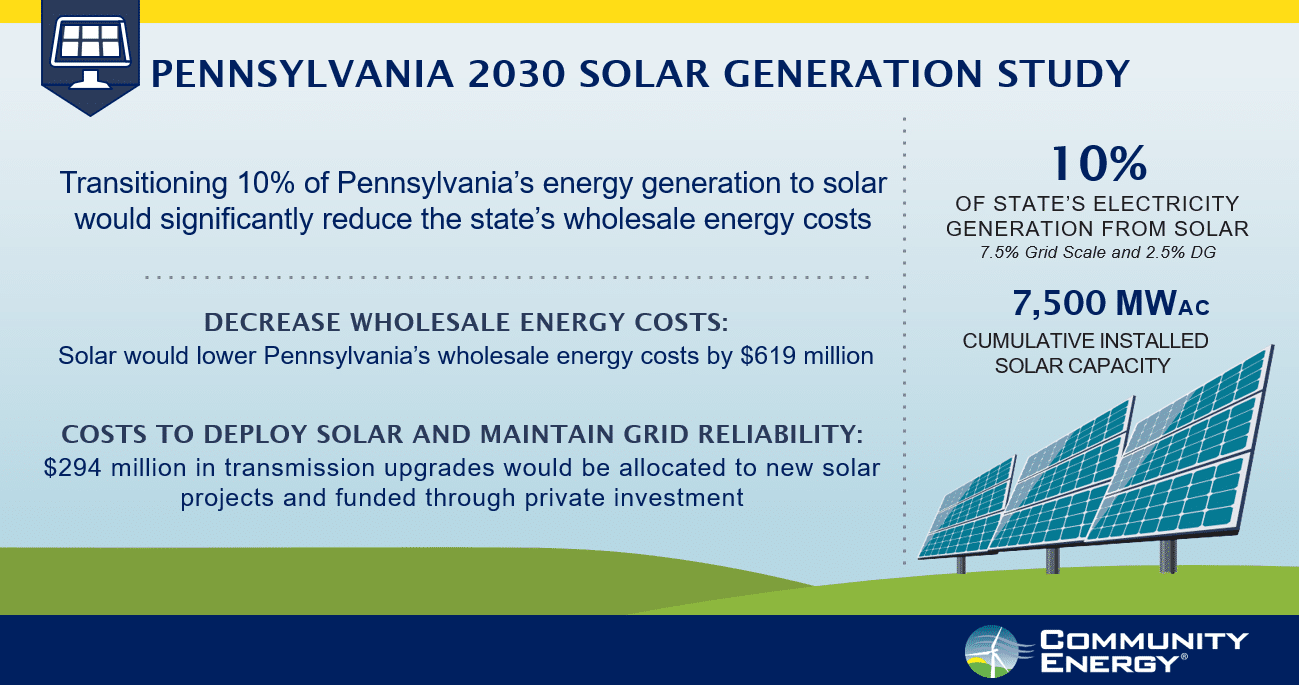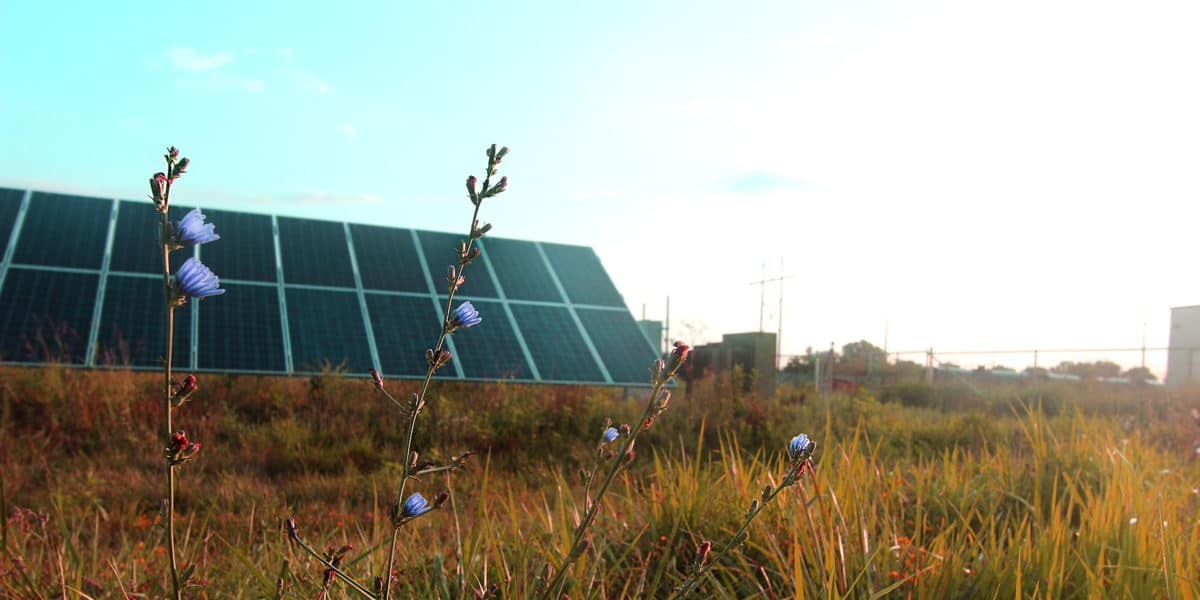It’s becoming quite clear that adding a decent amount of wind and solar power to the grid not only lowers emissions, but costs as well. We’ve seen projections in Indiana of $4.3 billion saved by 2035. Colorado numbers suggest that if we close all the coal by 2025, add 8 GW of wind, 2.8 GW of solar and 765 MW / 3.1 GWh of energy storage, we will see the retail price per kilowatt-hour of electricity fall from 10.2¢/kWh to 9.7¢/kWh. PacifiCorp, Florida Power & Light, and so many other utilities see this same pattern.

In a study commissioned by Community Energy from PowerGEM, Pennsylvania 2030 Solar Generation Study (pdf), it was found that by installing 7.5 GWac of solar power by 2030, the state of Pennsylvania would save $619 million a year in wholesale power costs, and would lower the costs to the multi-state PJM Interconnection region by $3 billion a year.
The model projects 5.1 GWac of utility scale solar, and 2.3 GWac of distributed solar power.

The study first looked at a projected stability report for the year 2030 done by PJM that saw a needed $368 million in transmission upgrades. Then the study added in the 7.5 GW of solar power, and did another stability analysis and found that nine transmission grid upgrades would be needed costing approximately $294 million (bottom line of table above) – just under 4¢/Wac. The report suggested that these costs would be borne by the solar power developers, and not directly by ratepayers.
The study then made judgment calls about the savings that solar would bring. Energy savings and wholesale price reductions were noted as solar generates peak power with no additional cost during the hours of the day when demand is highest and generation costs are at their peak, a concept known as “peak shaving” or “price suppression.” The report suggests that it would lower the wholesale price of electricity across the state of Pennsylvania (below left) from $40.1/MWh to $37.6/MWh, equivalent to $619 million a year. The lower right image shows that the broader PJM Interconnection region (below right) will save just over $3 billion a year.
Roughly speaking, 7.5 GWac is roughly 9.4 GWdc, which would cost roughly $10-15 billion dollars. Meaning, that the broader power grid’s savings would be enough to cover the cost of the solar (before considering selling the electricity) in 3-5 years.
This reality has been shown in California and New England – of course we see California pricing sometimes hitting $0/MWh in the daytime, but we’re also seeing solar in New England saving money. A report analyzing the week of a heat wave in the Northeast estimates that solar power saved $30 million in wholesale electricity costs due to lowering demand at its peak during mid-day – including $6.7 million in savings on July 3rd. In Vermont last summer we saw solar+storage saving $500,000 during high demand moments on the power grid.
This content is protected by copyright and may not be reused. If you want to cooperate with us and would like to reuse some of our content, please contact: editors@pv-magazine.com.










By submitting this form you agree to pv magazine using your data for the purposes of publishing your comment.
Your personal data will only be disclosed or otherwise transmitted to third parties for the purposes of spam filtering or if this is necessary for technical maintenance of the website. Any other transfer to third parties will not take place unless this is justified on the basis of applicable data protection regulations or if pv magazine is legally obliged to do so.
You may revoke this consent at any time with effect for the future, in which case your personal data will be deleted immediately. Otherwise, your data will be deleted if pv magazine has processed your request or the purpose of data storage is fulfilled.
Further information on data privacy can be found in our Data Protection Policy.